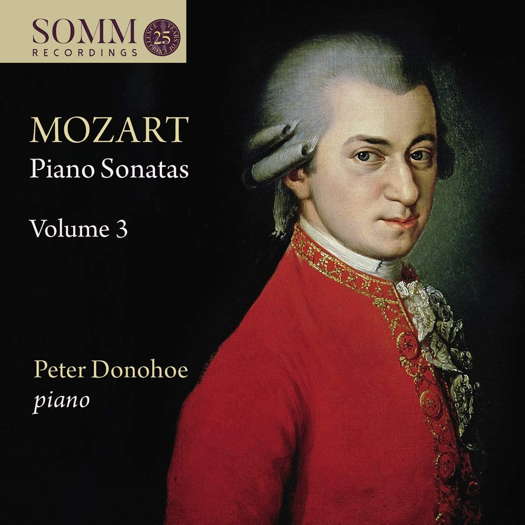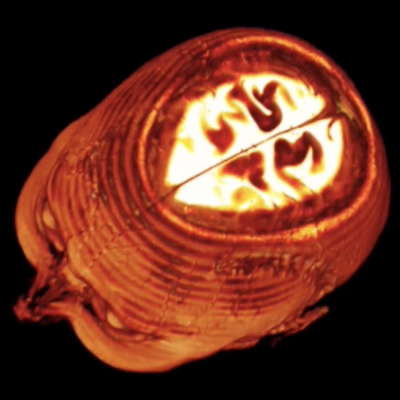- Liudmila Grigorievna Kovnatskaya
- Ruth Gipps
- Johann Strauss the Father
- Seymour Bernstein
- William Byrd
- Opéra Bastille
- Sonja Krefting
- Coventry Carol

Full of Joy
PATRICK MAXWELL celebrates
Peter Donohoe's Mozart Piano Sonatas
'... played with a precise and enjoyable dexterity and with admirable clarity; the collection as a whole deserves to be celebrated.'
It is, somehow, always strange to learn how much piano music Mozart wrote for the ostensible purpose of his teaching duties. Immediately, it reminds one of two things: that the most-loved composer to have ever lived worked in often desperate pecuniary conditions, and, more importantly, that his genius was unceasing for all his life and evident throughout all his work; the musical standard and originality never let down in the works he knew would not bring him immediate riches and were but necessities for whatever situations faced him. On another point, there is the issue of how seriously we should therefore take these pieces in relation to, say, his Requiem or Piano Concertos. As Clive James once wrote, to the question of how 'I dare presume to take lyric poetry and ice-dancing with seemingly equal seriousness, I have no short answer, beyond pointing out that homo faber and homo ludens are both members of the same species sapiens, and that Mozart played billiards.' Let us take these pieces at face value, then, and still then we can see that all his smaller works still possess the ingenuity and panache of the most recognised works, and the same mix of ratiocination and expression.
This new recording from renowned pianist Peter Donohoe is the third volume of his Mozart Piano Sonatas series. He brings to the music a characteristic tenderness of tone and expression, balancing each phrase to create a fully rounded musical whole whilst also highlighting each technical point in these sonatas.
The Sonata No 10 in C major, K 330, may well be at first listening a less exploratory piece than some of the others included on this disc, but the constant dialogue between the hands, together with the melodic textures providing the overall momentum, creates a typical Mozartian blend on creativity, assured, style, and gleeful originality. Donohoe plays with an experienced sense of phrase and attention to each detail, employing his brilliant musicianship throughout to highlight each detail; this dexterity is only achieved by the best pianist, and is always especially necessary for Mozart performances in order to unveil another level of sublimity.
Listen — Mozart: Andante cantabile (Piano Sonata No 10 in C)
(track 2, 0:00-1:00) © 2020 SOMM Recordings :
This subtlety of tone and expression is continued into the more jaunty third movement; at many points across all of these pieces one can hear the music that later influenced the sonatas of Beethoven and Schubert, as if Mozart were giving the most ornate and perfected skeleton from which all those who followed him would learn.
There follows the short but irrepressibly lively Gigue in G major, K 574, which was written in homage to Bach, and the Sonata No 18 in D major, K 576. Donohoe again plays with an impressive lightness of touch and attention to detail, although throughout the disc more breaks at the ends of phrases were wanted for clarity and sonority, and in places more vigour was needed to engender a livelier sound at points, such as at the beginning of the first movement where the phrases in octaves lead into the variations thereafter.
Listen — Mozart: Allegro (Piano Sonata No 18 in D)
(track 5, 0:01-0:55) © 2020 SOMM Recordings :
The Adagio in B minor, K540, written during another period of financial instability for Mozart, is a piece open to more interpretation than most short piano pieces, and Donohoe takes care to differentiate between the faster semi-quaver runs in the right hand and the more sedate harmonisations.
Listen — Mozart: Adagio in B minor
(track 8, 4:00-4:52) © 2020 SOMM Recordings :
The last Sonata in this recording, No 11 in A major, K 331, is perhaps the most well-known included here, mainly for the Alla Turca of the last movement, and it is the most explorative, paying little homage to the traditional strictures of sonata form. The long, lilting Andante grazioso first movement plays to Donohoe's strengths, with the strong contrast of the faster and then more lyrical sections, although more variety was welcome to the playing, which sometimes seemed unmoving, especially during the repeats, where a different tone was needed for more expression. However, each set of variations is played with a definite sense of clarity and tone which helps to evoke the growth which Mozart builds into the increasingly more expressive chords.
Listen — Mozart: Andante grazioso (Piano Sonata No 11 in A)
(track 9, 0:21-1:07) © 2020 SOMM Recordings :
The last movement is played with relish, although again more contrast could have been made between the sections to increase the joyous feel enhanced by the large spread chords and the long semi-quaver runs.
Listen — Mozart: Alla Turca: Allegretto (Piano Sonata No 11 in A)
(track 11, 2:19-3:19) © 2020 SOMM Recordings :
This is a recording full of joy, containing constantly changing music that is immediately and lastingly endearing within. It is played with a precise and enjoyable dexterity and with admirable clarity; the collection as a whole deserves to be celebrated.
Copyright © 3 July 2020
Patrick Maxwell,
Buckinghamshire, UK

CD INFORMATION: MOZART PIANO SONATAS VOLUME 3 - PETER DONOHOE
FURTHER INFORMATION: WOLFGANG AMADEUS MOZART
FURTHER INFORMATION: SOMM RECORDINGS




